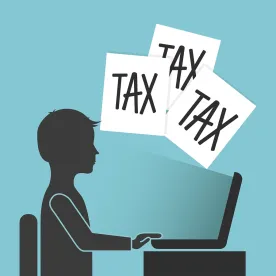On May 7, 2020, in response to a letter from a consortium of U.S. Senators dated April 23, 2020 (the Senate Letter), the Treasury Department stated that it intends to modify rules related to the Continuity Safe Harbor (as defined below) applicable to the production tax credit (PTC) and the investment tax credit (ITC) in light of the COVID-19 pandemic (the Treasury Letter).
As described in greater detail here, for a taxpayer seeking to claim PTCs or ITCs, the calendar year when such taxpayer begins construction of the relevant facility or property establishes the amount of available PTCs or ITCs. The amount of available PTCs and ITCs generally declines over time, and therefore the determination of the year when construction begins is critical to taxpayers seeking to claim these credits. A taxpayer may establish that construction has begun on a facility or property in a particular calendar year by demonstrating that physical work of a significant nature has begun (the Physical Work Test) or, under a safe harbor, by demonstrating that five percent or more of the total cost of such facility or property has been incurred (the Five Percent Safe Harbor), in each case, during such year. In addition, to satisfy the Physical Work Test, once physical work of a significant nature has begun, construction must be continuous until such facility or property is completed; similarly, to satisfy the Five Percent Safe Harbor, continuous efforts, rather than continuous construction, are required (the Continuity Requirement). A taxpayer is considered to satisfy the Continuity Requirement for either the Physical Work Test or the Five Percent Safe Harbor if the relevant facility or property is placed in service by the end of a calendar year that is no more than four calendar years after the calendar year when construction began (the Continuity Safe Harbor). If the taxpayer fails to satisfy the Continuity Safe Harbor, whether the taxpayer satisfies the Continuity Requirement will be based on the relevant facts and circumstances.
The Senate Letter expressed concern that, in light of unforeseen disruption resulting from the COVID-19 pandemic, including disruption to supply chains, construction operations, and project timelines, projects including qualified facilities and qualified energy property previously expected to be completed by the end of 2020 or 2021 may be delayed to a later year, which could prevent such projects from satisfying the Continuity Safe Harbor. The Senate Letter therefore proposed that, for projects beginning in 2016 or 2017, the Continuity Safe Harbor be temporarily extended from four years to five years, thereby allowing taxpayers additional time to satisfy the Continuity Safe Harbor. Accordingly, taxpayers that began construction on projects in 2016 or 2017 would be able to satisfy the Continuity Safe Harbor if such projects are completed by the end of 2020 or 2021, respectively. Although the Treasury Letter did not provide specific terms for the extension of the Continuity Safe Harbor, the Treasury Department acknowledged the concerns raised in the Senate Letter and expressed its intent to modify the relevant rules in the near future.




 />i
/>i
